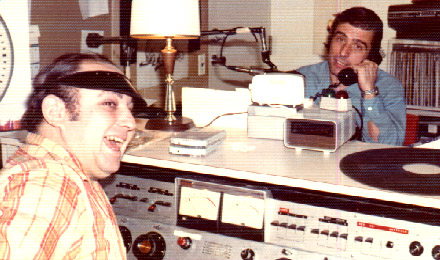 Artist: Professor Max Herman
Acoustic steel string guitar and vox. Singer/songwriter style.
Talent arrives at 8:30
Setup at 7PM SHARP.
Use my nomenclature:
Chain:
Vox: r121 RIBBON->Cloud->Vintec->ADL optical compressor (or Distressor set to OPTO.)
AGuit: Coincident x-y AKG451 pair->Daking->FATSO (read manual to set for OPTO.)
R00m: Royer SF12 Stereo RIBBON->Cloud->Vintec
Read: PMT: 58-63; 99-108 (Stereo Micing.)
Acoustic guitar coincident pair as shown in image.
Optical compressors:
LA2A
Gearslutz geeks muse on opto.
Read MRT:
491-502
Read "Phase Deystified" Article I gave you.
Read FATSO manual I gave you. Know how to set it up for OPTO mode.
Digi manuals may be found here:
DOCS
I am having trouble transferring tons of blog material. But I randomly found this entry which might be useful to read:
Artist: Professor Max Herman
Acoustic steel string guitar and vox. Singer/songwriter style.
Talent arrives at 8:30
Setup at 7PM SHARP.
Use my nomenclature:
Chain:
Vox: r121 RIBBON->Cloud->Vintec->ADL optical compressor (or Distressor set to OPTO.)
AGuit: Coincident x-y AKG451 pair->Daking->FATSO (read manual to set for OPTO.)
R00m: Royer SF12 Stereo RIBBON->Cloud->Vintec
Read: PMT: 58-63; 99-108 (Stereo Micing.)
Acoustic guitar coincident pair as shown in image.
Optical compressors:
LA2A
Gearslutz geeks muse on opto.
Read MRT:
491-502
Read "Phase Deystified" Article I gave you.
Read FATSO manual I gave you. Know how to set it up for OPTO mode.
Digi manuals may be found here:
DOCS
I am having trouble transferring tons of blog material. But I randomly found this entry which might be useful to read:
Thoughts re: the Drum Setup Session:
Chris, Ace and Raven did a fairly good job. The actual drum recording came out OK. That is largely due to 2 things: Firstly, the instrument/player. Mike has superb sounding drums and knows how to tune/hit them to get a good studio recording. Secondly, the micing technique. What I showed you regarding mic selection, positioning, and setup, is invaluable and used to be considered trade secrets. With the sounds you captured, an astute mixer could make a nice sounding record. But alas, we had no band. (Wikipedia defines a band as a group of musicians who rehearse material, such that it may be successfully performed for an audience or within the recording milieu.
And now for the stupid mistakes: There are too many to remember. It was basically ongoing, the entire evening. In the end we had zero technical failures; but numerous human errors.
One big error was the inability to record the MIDI information correctly. I went to considerable pains to make that a part of the demonstration. Unfortunately, Chris did not check to see that viable MIDI notes were being recorded prior to running takes. And/or check to see if recorded MIDI notes would trigger the sound module. I tested the system and it worked perfectly, however, Wei kept sending MIDI program change data which wiped out the careful setup. If you paid attention, you heard me tell him at least four times not to do that. I wanted him to keep the piano sound he wanted, and concentrate on playing instead of jerking with drum and synth sounds to impress easily awed gawkers.
As for whining: MARS is a No Whining Zone. Please don't whine to me. I am absolutely sure I could easily top any tale of woe you have; you know… how-long-you-did-not-sleep-while-working-on-a-project. Boring, standard-fare for a media person, or artist. OK if it's funny; otherwise…uninteresting. zzzzzzz
It's very possible that next week's session will be a full band with live drum kit. That will be for real and not a "setup session." We will use the house kit, which is much harder to get a good sound from, so it's gonna be a bitch. What…you thought last night was a bitch? Hahahahahahaha.
On the other hand, we'll have players who rehearse…so…..
I want to commend Chris and his team for having the balls to step up to the plate and for diving into a tough situation. I think now you all can appreciate that this blog is important and as indicated in the course outline, participation is mandatory here. That is how Chris and his team were selected; I will continue this as policy. So expect to be left out if your think you are too good for this little exchange on shitty myspace.
Other notes:
-monitor volume needs to be modulated. not left LOUD all night
-there will be punching in upcoming sessions. review notes on how to do that.
-DO NOT EVER MOVE OR TOUCH A MUSICIAN'S INSTRUMENT UNLESS YOU HAVE PERMISSION.
-be aware of the musician's needs….eye contact.
-stay alert.
-learn the difference between balanced and unbalanced lines (tons of stuff in your readings.)
-I am soooo fucking tired of explaining how a mixer and aux sends/returns work. It's really fookin' basic and we do it every GD week. I will totally freak out next time I am forced to repeat this basic shit.
-chris has a good sense of equalization. I notice that he is not afraid to crank the eq settings in both hardware and software. That is good. It's how you learn. I commend that.
-when I am talking to you, lower the monitor volume so you can hear me and I don't have to shout. there is a dim button for this.
-phase is very important. I think chris and team did a good job following my procedures for aligning phase response insofar as alignment is possible.
-the class is clueless about discrete cue mix procedures. I gave you a very clear procedural list re this. What is the problem?
If I think of more I will post them here as comments. Stay tuned for new blog re next session soon.
























